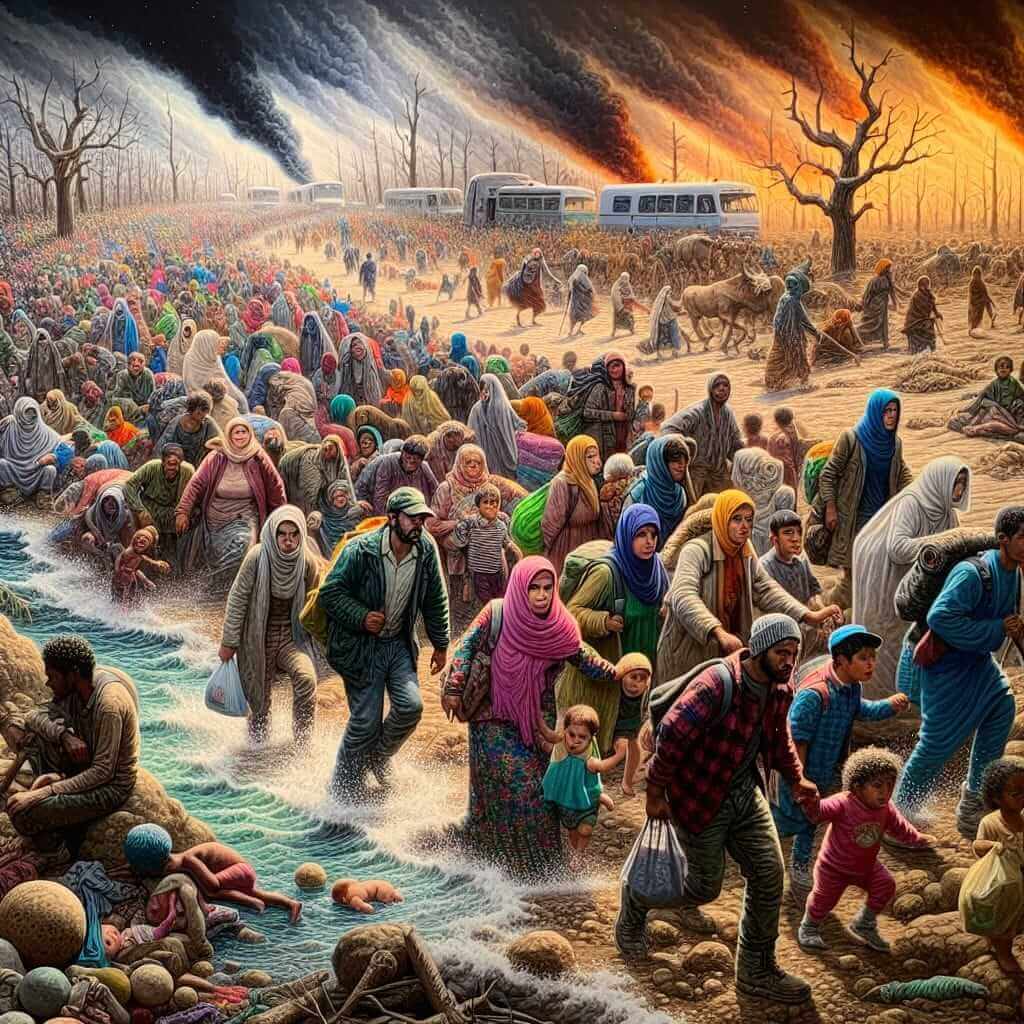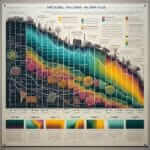The Reading section of the IELTS exam often includes texts that address significant and current global issues. One such pressing topic is “How is climate change influencing global migration patterns?”. Given its relevance, there’s a high chance that a similar topic could appear in future exams.
Climate change is one of the most critical issues in today’s world, impacting various aspects of human life, including migration patterns. Understanding this topic not only helps in the Reading section but also provides insights into ongoing environmental and socio-economic changes.
Main Content
Reading Passage
Title: How Climate Change is Shaping Global Migration Patterns
Climate change is increasingly influencing global migration patterns. As temperatures rise, sea levels increase, and weather patterns become more erratic, millions of people are being forced to leave their homes in search of safer, more stable environments. This phenomenon is known as climate-induced migration.
In recent years, several countries have recorded significant movements of people due to adverse climatic conditions. For instance, small island nations in the Pacific Ocean, like Kiribati and Tuvalu, are facing existential threats due to rising sea levels. Many inhabitants have sought refuge in neighboring countries such as New Zealand and Australia, which have had to adapt their immigration policies to accommodate these new migrants.
In addition to rising sea levels, extreme weather events such as hurricanes, floods, and droughts are forcing people to migrate. Sub-Saharan Africa, for instance, has seen a substantial increase in migration due to prolonged droughts, leading to crop failures and water scarcity. Consequently, many families have relocated to urban areas or even crossed borders to find sustenance and security.
Not only are developing nations affected, but industrialized countries are also facing internal climate-induced migration. The United States provides a stark example, where hurricanes like Katrina and wildfires in California have displaced thousands of residents. These internal migrations are reshaping demographic patterns within the country, placing pressures on cities and resources.
Furthermore, climate-induced migration often exacerbates existing political and social tensions. Countries receiving large numbers of climate migrants may struggle with integration, resource allocation, and cultural assimilation. This has been observed in Europe, where an influx of refugees, partly driven by climate conditions, has created significant political challenges.
In conclusion, climate change is significantly altering migration patterns around the globe. As the environment continues to degrade, the number of climate-induced migrants is expected to rise, posing challenges and opportunities for both source and destination countries.
Questions
-
Multiple Choice Questions
-
According to the passage, what is one of the main causes of climate-induced migration?
- A) Political instability
- B) Economic downturns
- C) Natural disasters
- D) Technological advancements
-
Which of the following countries has seen significant migration due to rising sea levels?
- A) United States
- B) Germany
- C) Kiribati
- D) Brazil
-
-
True/False/Not Given
- Many people in Sub-Saharan Africa have migrated due to prolonged droughts. (True)
- Climate-induced migration only affects developing nations. (False)
- Europe has not experienced any political challenges due to climate-induced migration. (Not Given)
-
Matching Information
- Match the country to its climate-inducing factor:
- Kiribati – (i) Rising sea levels
- Sub-Saharan Africa – (ii) Prolonged droughts
- United States – (iii) Hurricanes and wildfires
- Match the country to its climate-inducing factor:
-
Summary Completion
Climate change is causing significant global migration. The Pacific nations like Kiribati are heavily impacted by ____ (rising sea levels), while Sub-Saharan Africa faces challenges due to ____ (prolonged droughts). Even developed nations like the ____ (United States) are not immune, facing internal migration due to ____ (hurricanes and wildfires).
Answer Key
-
Multiple Choice Questions
- C) Natural disasters
- C) Kiribati
-
True/False/Not Given
- True
- False
- Not Given
-
Matching Information
- Kiribati – (i) Rising sea levels
- Sub-Saharan Africa – (ii) Prolonged droughts
- United States – (iii) Hurricanes and wildfires
-
Summary Completion
- Rising sea levels
- Prolonged droughts
- United States
- Hurricanes and wildfires
Common Mistakes to Avoid
- Overthinking Question Traps: Some questions might include information that looks relevant but doesn’t exactly match the passage.
- Misreading Detail: Pay attention to specific details and wording. For instance, confusing ‘rising sea levels’ with ‘floods’ can lead to wrong answers.
- Time Management: Often, candidates spend too much time on one question. Practice skimming to find relevant parts of the passage quickly.
Important Vocabulary
- Induced (adj): /ɪnˈdjuːst/ – Caused by a specific factor.
- Erratic (adj): /ɪˈrætɪk/ – Unpredictable or inconsistent.
- Existential (adj): /ˌɛksɪˈstɛnʃəl/ – Relating to existence.
- Sustenance (n): /ˈsʌstənəns/ – Means of maintaining life, such as food and water.
- Assimilation (n): /əˌsɪmɪˈleɪʃən/ – The process of integrating into a new society or culture.
Grammar Focus
- Relative Clauses: “Countries like Kiribati, which are facing threats due to rising sea levels, have seen significant migration.” Use relative clauses to add extra information about the noun.
- Passive Voice: “Several countries have recorded significant movements of people due to adverse climatic conditions.” Use passive voice to place the focus on the action rather than the subject.
Recommendations for High Reading Scores
- Regular Practice: Consistent reading practice is vital. Use a variety of sources including academic journals, news articles, and IELTS preparation texts.
- Vocabulary Building: Expand your vocabulary by learning new words daily. Pay special attention to words related to current global issues.
- Timed Reading: Practice reading passages under timed conditions to simulate exam scenarios and improve time management.
By comprehensively understanding how climate change influences global migration patterns, you will not only be well-prepared for the IELTS Reading section but also gain valuable knowledge on a critical global issue.
Related Links
- How is Climate Change Influencing Migration Patterns?
- How is Climate Change Influencing Global Tourism Patterns?
- How is Climate Change Influencing Global Weather Patterns?
 Climate Change Global Migration Patterns
Climate Change Global Migration Patterns
By following this structured approach, you’ll be able to tackle similar topics efficiently and enhance your IELTS Reading score. Happy studying!


